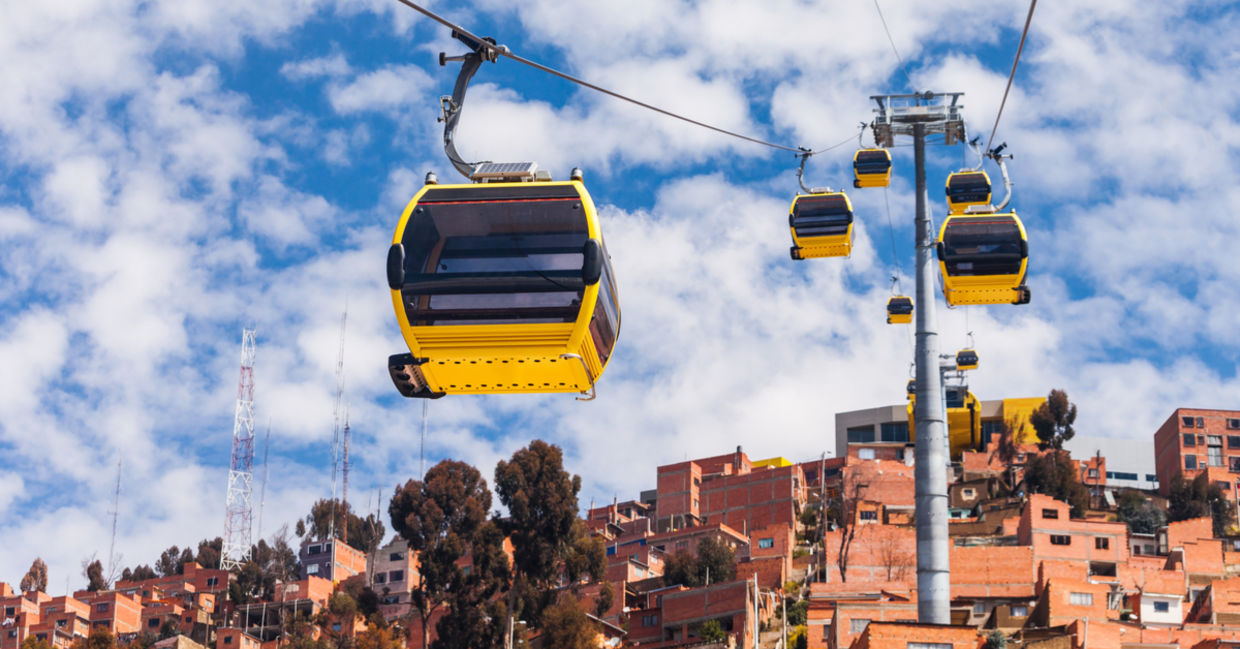
(saiko3p / Shutterstock.com)
Gondolas, or cable cars, are common sights at ski resorts and amusement parks. But did you know that this airborne transport may be the hottest trend in urban transportation? From South America to Europe, these eco-friendly gondolas are serving commuters and tourists in many cities.
The first 21st century public transportation gondolas were introduced in Latin America in Medellín, Columbia in 2004, according to Fast Company, and its popularity spurred more cities in the region including Mexico City, La Paz, Bolivia, and Caracas, Venezuela. But the earliest public tramway is the one that connects Roosevelt Island to Manhattan in New York City that was built over three decades earlier. Now Paris, France is joining the club.
Why Gondolas?
Gondolas can connect hard-to reach places like cities built on hills or mountains. Medellín’s cable cars connect the city center with poor hilltop communities, it has six lines with 20 stations that traverse the city. The La Paz system, according to a World Bank blog, has 10 lines that run for nearly 30 kilometers and is used by 160 thousand passengers daily.
It is much cheaper to construct gondolas than railways, tunnels, or bridges. The cost of the construction ranges from $19 million per kilometer to $32 million and take a relatively short time to complete. Plus, they are quiet eco-friendly transportation.
“Aerial gondolas may appear exotic, but they leverage previously untapped aerial rights-of-way and connect people to destination points in urban spaces in a way that alleviates the burden on existing routes,” Jason Westrope from the Development Management Associates, that is involved in a proposed gondola project in Chicago, Illinois, told Fast Company.
There are many proposed gondola projects that haven’t gotten off the ground yet, reported Axios. Besides the Chicago proposal, Tampa Bay in Florida is studying the feasibility of connecting the downtown area to the beach and other cities are in the proposal stage.
Environmentally Friendly
Gondolas can help wean people from car dependency according to Fast Company. If enough areas are connected, people may choose to use this new attractive public transportation and leave their cars at home. Since many are electric, this makes them very eco-friendly.
“If [gondolas] helps with that, it will have done a good thing for urban transportation as well as climate change mitigation, urban equity, and public health,” Brent Toderian, the former Vancouver, Canada’s chief city planner, told Fast Company.
While gondolas won’t replace mass transportation systems, they could be a much more convenient and fun way to travel from place to place and could help fill in public transportation gaps. Gondolas may soon be coming to a city near you.
YOU MIGHT ALSO LIKE:
All Aboard This Country’s First Driverless Train
New Seaglider Could Transform Coastal Travel
Flight-Free Travel Lets You Explore Scenic Wonders Overland







